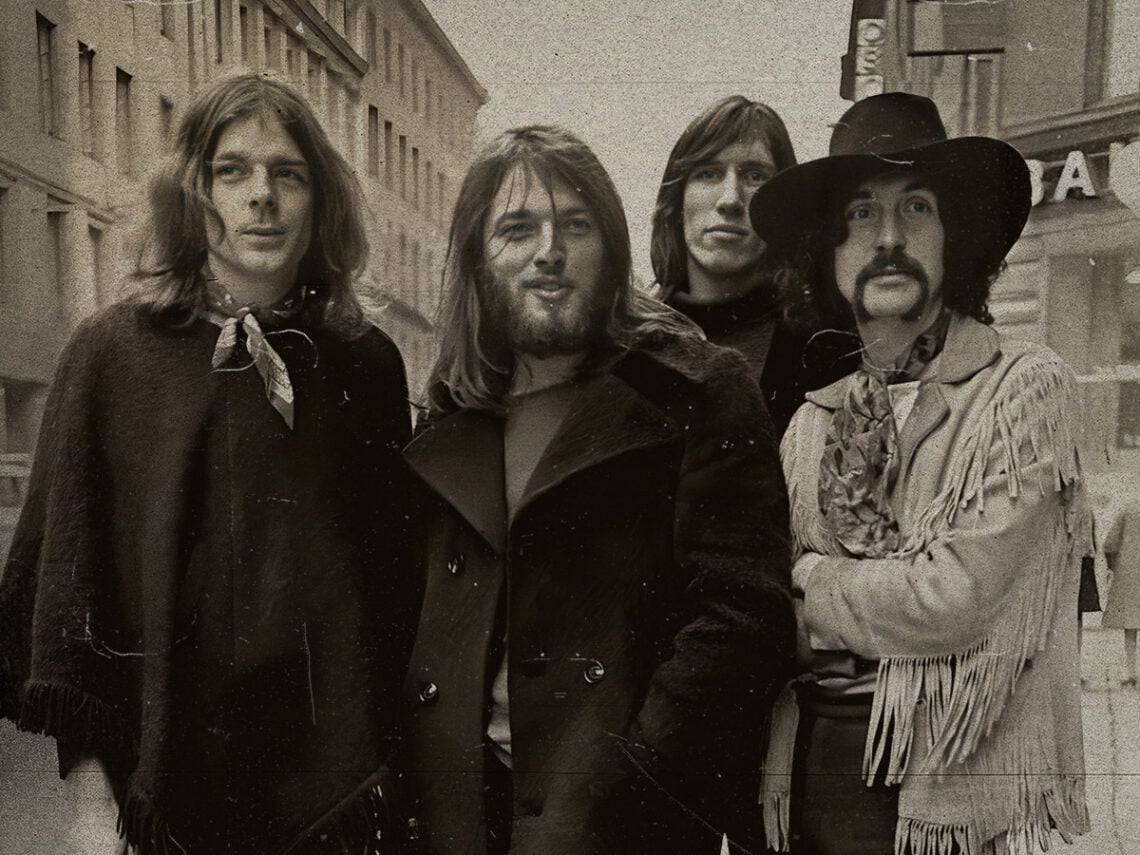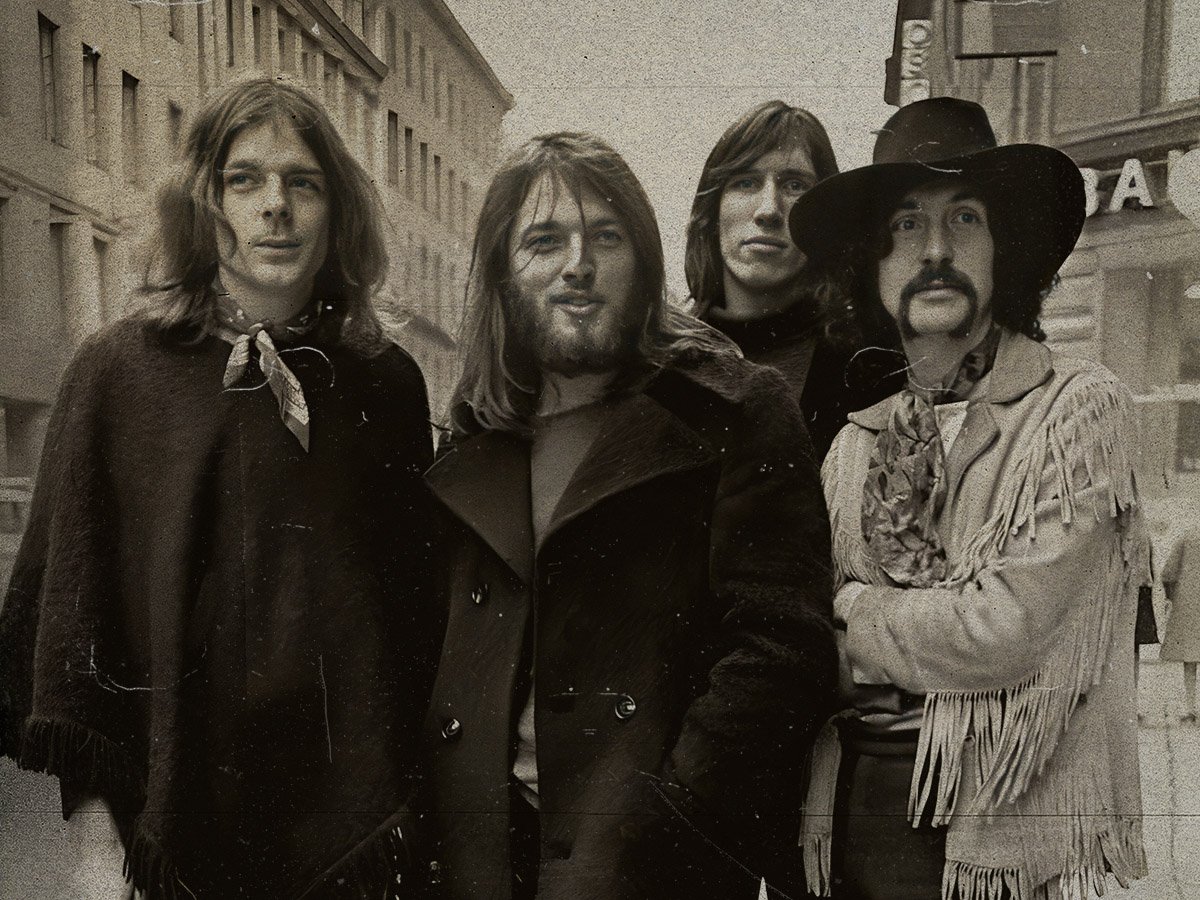
(Credit: Far Out / Roger Tillberg / Alamy)
For a moment, it looked like space rock giants Pink Floyd may have slowly trundled toward a cult footnote in prog’s 1970s heyday. Following their Anglo-surrealism foundings under the creative leadership of Syd Barrett, his departure in 1968 spelt a run of albums plagued with a nagging mush of directionless, psychedelic noodlings and half-baked concepts that lacked the focus of 1967’s The Piper at the Gates of Dawn debut.
While there are gems of brilliance in their artistic interregnum—’Echoes’ is a stunning closer to 1971’s Meddle—they would have seven albums behind them before reaching their creative and commercial peak.
Fleshing out material for their eighth LP during concert rehearsals and live shows across 1972, Pink Floyd spent the best part of a year fine-tuning what became the guts of The Dark Side of the Moon. Exorcising the pressures of fame and the mental illness that plagued their former frontman, their new work pulled the band toward an infinitely more coherent and richer sonic plane of intrepid songcraft, innovative electronic textures and powerhouse session singers delivering a heady slice of aural cinema that encapsulated the ambitions of the album era.
It was a blockbuster monster too, selling over 45 million reported sales and the fourth biggest selling album of all time. Shaping a unified work that veered through greed, isolation, dissociation and madness, principal songwriter Roger Waters felt the record needed a conceptual closer to tie the record together.
Lifting lyrics from the album’s ‘Breathe’ opener, ‘Eclipse’ is seamlessly segued after ‘Brain Damage’ and travels a curious form of songwriting that forced guitarist David Gilmour to think inventively about how to embellish such a challenging sketch of a song. “I remember working hard on making it build and adding harmonies that join in as you go through the song,” he told Rolling Stone in 2011. “Because there’s nothing to it—there’s no chorus, there’s no middle eight, there’s just a straight list. So, every four lines we’ll do something different”.
The unusual arrangements that shroud ‘Eclipse’ afford the piece a powerful and cosmic sense of coda to The Dark Side of the Moon, given a circular thematic return by closing the finale with the same introductory 9/8 heartbeat that opens the record with ‘Speak’—a device they’d revisit for The Wall‘s “Isn’t this where…We came in” looping motif.
Lyrically cycling through the myriad facets of the human condition, across the sensory fervour of life to Man’s many conflicts and stuggles in the material realm as well as in the heart, Waters always felt ‘Eclipse’s plumb of emotional depths eschewed cryptic allusions and shone with an accessible universality.
“I don’t see it as a riddle,” Waters revealed in 1987’s Pink Floyd: Bricks in the Wall. “The album uses the sun and the moon as symbols; the light and the dark; the good and the bad; the life force as opposed to the death force. I think it’s a very simple statement saying that all the good things life can offer are there for us to grasp, but that the influence of some dark force in our natures prevents us from seizing them”.
It’s the crucial detail which sets Pink Floyd apart in the world of prog—if that’s even an appropriate genre tag. While their contemporaries were dreaming up double-LP fantasy tales and ballet on ice, Pink Floyd wielded prog’s artistic scope and ambitions to score work that penetrated the soul in all its anguish and torment.
No synth wizards or stodgy ten-minute drum solos to compensate for ideas—’Eclipse’ was too busy hurtling toward a remote plane of space rock awe and intrepid spiritual study to ever suffer their peers’ same fate of artistic oblivion.
Related Topics
Subscribe To The Far Out Newsletter
